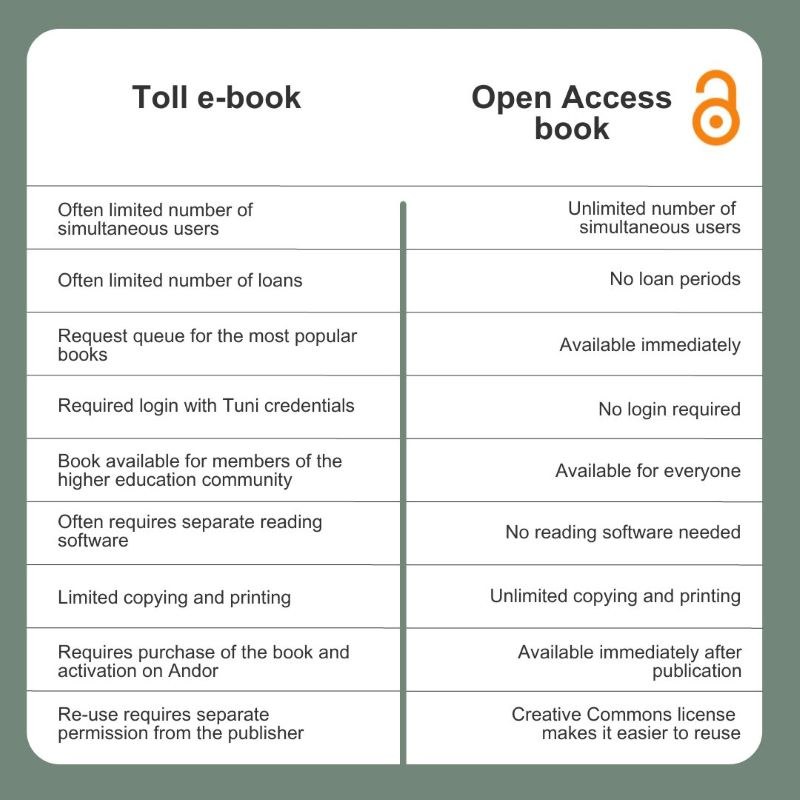Open Access books increase equality and flexibility in studying

There are plenty of Open Access books in the library's Andor search service, where you can limit your search to Open Access books. The Andor search service contains thousands of peer-reviewed Open Access books from different fields of science, for example, the contents of the Directory of Open Access Books (DOAB) and Open Research Library by Knowledge Unlatched, which are updated regularly in Andor. During International Open Access Week, a theme collection of open access books on current topics is launched.
The library also supports various services which promote Open Science with support and membership fees. This year, for example, the library has supported Knowledge Unlatched's Peace and Justice collection.
Open Access books as course books
The Tampere higher education community is committed to national and international guidelines on open education, such as the UNESCO recommendation on open educational resources (2019).
Open Access books promote both lifelong and deep approach to learning, because the books are available before, during and after the studies. Open Access books provide equal learning opportunities, because a book can have several simultaneous users of a book, and there is no separate charge for access or availability. Furthermore, Open Access books are not technically restricted or limited to a specific group of users. In general, the reuse of Open Access books can be defined using different options in Creative Commons license. The CC BY license, which allows extensive reuse rights, allows Open Access books to be shared and further developed, such as translations or adaptations.
In recent years, there have been unfortunate developments in the availability of e-books, particularly in the form of toll course books. Some popular toll e-course books can only be purchased with expensive licenses for one to three simultaneous users. The situation is difficult if the course involves several hundred students, and there are not enough printed books for everyone.
Some commercial publishers have started selling their toll e-course books only with annual licenses, the price of which is based on the number of participants in the course. These books can be expensive to buy each year. They are also very time-consuming to subscribe to, because it is necessary to find out if there is a demand for the book and how many students participate in the course. A commercial publisher may remove a toll e-book from a large e-book collection that is charged annually.
Open Access books will not be removed from collection in the middle of a course or at a critical stage of the thesis. And so, favouring Open Access books as course material for higher education is a great way to avoid the challenges associated with toll e-books. The table below shows the most common differences between a toll e-book and an Open Access book.

Find more information about the topic in the library guides
Open education and open educational resources
Open Access books as a course books
Course book acquisition
Authored by Information Specialists Johanna Nummi, Kati Syvälahti, Soile Kolehmainen and Sari Leppänen





